..
Those of you who have read the novel "John Barleycorn" by Jack London, will know what I am talking about: the dividing line between Genuss and Sucht may become very thin.
Bad luck and hard times may quickly help to pulverize that thinness...
Actually much broader than that, Blues Music seems to be forever anchored in the vast triangle drifting within love (or the absence of it), trouble and booze.
Take those topics, bring one of them (or all) to excess, and you will be faced with the necessary stuff to write the lyrics of a blues song (or have the sensibility to understand and feel them).
The difference between beeing fake or authentic, just lies on really paying the dues...
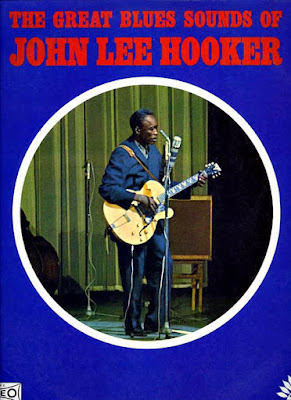
Looking back, I think that the very first blues record that I ever bought, was "Live and Well" by B.B. King (I talked about it on my former post about electric blues). It's been a long time since that day... I got it in the end of 1970: 39 years ago!
February 20, 1971, I had the chance of finding the record shown above (I was lazy to stitch the whole image, sorry...). That record would forever change my life and my musical perception.
But before I proceed, let me put some things into perspective...
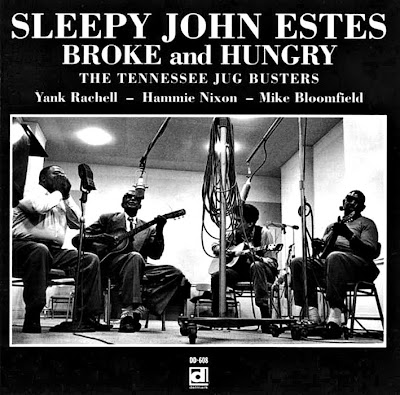
Recorded March 3, 1964, at Sound Studios
(Jan 25, 1904 in Ripley, Tennessee - Jun 5, 1977 in Brownsville, Tennessee)
Thank you Delmark for the nice original cover!
In those years of socio-economic and cultural poverty, record shops would not abound in Portugal, and it was not easy to find, or hear, some kinds of music.
Furthermore, the establishment found a lot of art forms to be undesirable. We lived in a deep dark hole, having to stand the ghost of a stupid censorship.
The Catholic Church had a strong influence on our old-fashioned society, and everything that sounded rocky, jazzy or bluesy was labeled suspect or evil and thrown on a big undefined monster that you could briefly describe as "fear of communism" (even if those things had absolutely nothing to do with it...).
The kind of shops that we can find today were just inimaginable, and who could even dream about credit cards and Internet (or even a fax machine, for that matter)?
We could very often find our records in strange shops, somewhere hidden in the middle of refrigerators, stoves and toasters. Ordinarily, the shop assistant would look at the record, and then at us like if we were creatures from outer space...

(Once again, I was too lazy to stitch the whole image...).

Recorded ca. 1959
(Mar 15, 1912 in Centerville, Texas - Jan 30, 1982 in Houston, Texas)
In reality, the two covers above belong to the same record (a really good acoustic set by the way, I will forever treasure it!). The blue one was from the original LP, the color photograph is from the CD.
Although not so bad in this case, I am sometimes amazed how record labels change nice cover designs with horrible ones. I can maybe imagine, that in some cases there might exist some copyright issues, or that sometimes they make something else because they put two LP's on one CD (not the case here. The music tracks are the same on both versions). Anyway, I can't understand how good taste can be replaced with bad one. Often, it is very hard to identify some recordings you might be searching for.
A plea for the music industry: PLEASE, GIVE US BACK THOSE CLASSIC COVERS!!!

Recorded in 1960 in Navasota, Texas, and 1966 in Berkeley, California
(Apr 9, 1895 in Navasota, Texas - Jan 30, 1976 in Navasota, Texas)

Recorded in New Orleans in the late 1950s
(Jan 21, 1936 - Feb 18, 2009 in New Orleans, Louisiana)

Recordings made between 1965 and 1969 in Fairfax, Virginia, and Stuttgart, Germany
(1924 in Rappahannock County, Virginia - 2002 in Fairfax, Virginia)
As a sidenote: Mr. Jackson earned most of his living as a grave digger. In 1986, he was recipient of the National Heritage Fellowship

Recorded in Copenhagen, Denmark (late 60s?)
(ca. 1897 in Glendora, Mississippi - May 25, 1965 in Helena, Arkansas)
This is the audiophile version by Acoustic Sounds, licensed from Storyville Records.
It showcases outstanding and tasteful guitar work by Matt Murphy and drums by Billie Stepney. Memphis Slim also gives a helping hand.

Recorded in 1966
(1892 in Teoc, Mississippi - Nov 2, 1966 in Grenada, Mississippi)

Recorded in Houston, 1967-69
( Mar 22, 1932 in Bellville, Texas - Jun 29, 1978 in Houston, Texas)

Recorded in San Francisco, December 1961
(S. Terry: Oct 24, 1911 in Greensboro, N. Carolina - Mar 11 in Mineola, NY)
(B. McGhee: Nov 30, 1915 in Knoxville, Tenn. - Feb 16, 1996 in Oakland, CA)
Maybe the best well known duo in Blues Music, both Sonny and Brownie had to learn to live with physical handicaps: Brownie (guitar, vocals) was lame and Sonny (harmonica, vocals) was blind.
The duo also played an important role in the Folk Movement of the 1950s and 1960s, having collaborated with, among others, the famous Woody Guthrie.
The liner notes on this record state "that these performances at Sugar Hill are among the very best recorded examples of Brownie McGhee and Sonny Terry ever issued". I can't even pretend to know all their vast discography, but from what I know, I must say that it is hard to disagree...
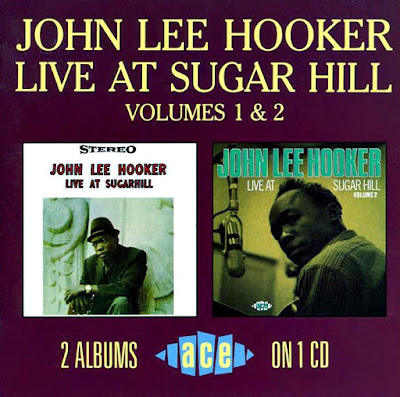
Recorded November 1962
(Aug 22, 1917 near Clarksdale, Miss. - Jun 21, 2001 in Los Altos, CA)
John Lee Hooker is alone with his guitar on this recordings.
Again from the liner notes: "As long as man like Hooker are alive, so too will be the blues that was born in Mississippi - in all of its artistry, poetry and raunch. It's more than just a musical style, it's a tribute to the human spirit - to not only survive, but surmount agony, and create a catharsis as well. Hooker is one of the last of the giants", Tony Glover.
How could I express it better? This one I would carry to my grave!

Recorded in 1967
(Aug 24, 1905 in Forest, Mississippi - 1974 in Nassawadox, Virginia)
Arthur "Big Boy" Crudup wrote several songs that would later become Elvis Presley hits, like "That's All Right Mama".
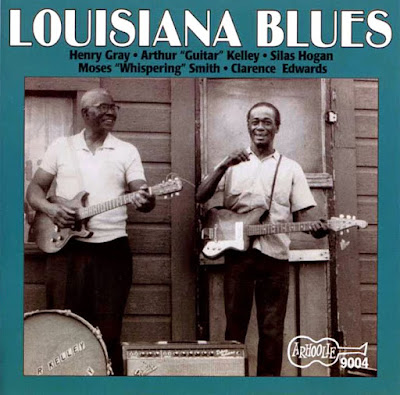
Recorded in Baton Rouge, Louisiana, on April 27, 1970
I have great admiration for Arhoolie Productions. They have produced, over the years, a catalogue of great value and legacy. I only have a little complaint: on some CDs, they display some rather ugly covers! I am glad that, in this case, they have kept the original cover from the LP.
I enjoy this record since 1972. I found it in one of those shops selling refrigerators and vacuum-cleaners...

Recorded July 21st, 1968, in Memphis
(Nov 12, 1909 in Houston, Mississippi - Feb 26, 1977 in Memphis, Tennessee)
Recorded on the occasion of the 1968 Memphis Country Blues Festival, the music on this album was a kind of experiment to Bukka White, as he performed with a small rhythm section. Such a circumstance, however, didn't diminish the powerful authenticity of this unique bluesman.
Mr. Booker T. Washington White was cousin of B.B. King, having offered him his first guitar.

Recorded at Apostolic Studios, March 1969
(Apr 30, 1896 in Laurens, South Carolina - May 5, 1972 in Hammonton, New Jersey)
Many white musicians have learned with, or been influenced by the music and guitar style of Gary Davis: Jerry Garcia (Grateful Dead), Jorma Kaukonen (Jefferson Airplane, Hot Tuna), Ry Cooder, Stefan Grossman and many others. Some have even included Davis' songs in their concert repertory.

Recorded in April and May, 1961
(Mar 6, 1893? in Greenwood, Miss. - Sep 14, 1981 in Memphis, Tenn.)

Recorded in 1960 in Los Gatos, CA, and in 1969 in Berkeley, CA
(Oct 16, 1903 in Crawford, Mississippi - Dec 17, 1982 in Macon, Mississippi)
"Big Joe played a 9-string guitar which he pounded, slapped and drove like a demented downhill slalom through a thicket of seminal Delta blues, singing in a gutsy, raw, emotion-exhausting voice" (Ian Anderson).
I also couldn't say it better...
This CD is also a kind of two LPs in one CD.
"Thinking of What They Did to Me" was the title of the LP recorded in Berkeley in 1969, featuring on some tracks the harmonica playing of Charlie Musselwhite. I also bought that LP in Coimbra in 1973.

Recorded by Moses Asch in 1956 (?)
(Jun 26, 1898 in Bolivar, Mississippi - Aug 15, 1958 in Chicago, Illinois)
Put together from various tapes, this album showcases some titles recorded live; you can hear Pete Seeger accompanying with his banjo and voice in "John Henry".
I can't refrain from praising the great portrait that graces this album cover.
The authorship is not mentioned, but he (or she) must have been a good photographer!

Recorded at various sessions between 1956 and 1965
(June 10, 1910 in White Station, Miss. - January 10, 1976 in Hines, Illinois)
In 1951 Chester Burnett, aka Howlin' Wolf, was recorded in Memphis by record producer Sam Philips, the same man that scouted such talents as Elvis Presley, Johnny Cash and Carl Perkins. These recordings were then leased to Chess Records, the famous label from Chicago. Their sucess helped Wolf move to Chicago in 1953, where he became one of the most regarded musicians to record for that label. In fact, some people think that he was one of the most influential blues singer ever.

Recorded in 1968 and 1969
(1904-5? in Rossville, Tennessee - Jul 3, 1972 in Memphis, Tennessee)
Mr. Chris Strachwitz recorded the second half of this CD, previously unissued, at his own house in Berkeley, one evening in March of 1968.
The first eight tracks were recorded at Sierra Sound Studios, in 1969, with Mike Russo (2nd gt), John Kahn (b) and Bob Jones (dr). These eight tracks made the LP "Fred McDowell And His Blues Boys", which I got in 1972.
The cover of that record was wonderful, with three nice black and white photographs of Fred playing his guitar. The back cover showed another nice relaxed picture of Fred and Mike Russo sitting in a kitchen table, some bottles on it, playing their guitars and smiling.
Now, look at the cover above: if I didn't know that the music is absolutely outstanding, I would NOT buy the record...
C'mon Arhoolie, please give us again the great covers that you used to produce. The fantastic music that you have in your great catalogue really deserves it!!!

Recorded in Copenhagen, Denmark, in 1960 and 1961
(Jul 4, 1910? in New Orleans, Louisiana - Jan 21, 1992 in Hanover, Germany)
Now, this is another gem in my small collection for sure! A rather intimate record, most titles are slow numbers, sounding deep and sad. You can hardly find here the entertaining character of some of Dupree's recordings.
"
Nobody knows, nobody worries, nobody cares... this sense of isolation, of frustration, runs through the lyrics of almost all the songs on this LP, not only on
Trouble, Trouble... on the whole these are songs of sadness, exhibiting the most sensitive aspect of Champion Jack Dupree's talents", as Charles Fox very well expresses on the liner notes.
The Champion (this nickname derives from is boxing days as a fighter) is solely accompanied by the masterly understated guitar work of Stuff Lange. His guitar alone would be worth the price, even without the greatness of Jack Dupree!
Of course, having both is heaven. Another one appropriate for my grave...
(I was lucky enough to see Mr. Dupree live in Münster, Germany, around 1974 or 75).
..
I can see now that I made a too long post, but please don't blame me. I am not an expert or a musician, I am just a Blues lover, and I only wish to share this rich heritage. Without it, the world would be much poorer.
Excuse me if I maybe gave wrong informations, my intent was to call your attention to the records and the music. You can get much better and knowledgeable informations somewhere else.
I hope to have opened your appetite...
..
Try to listen to some of this Blues Music while you look at some older photographs depicting the American (and not only the American) society some decades ago. You will better understand and feel the music, you will better assimilate its social context.
I would suggest some work by Robert Frank: the seminal book "
The Americans", with introduction by Jack Kerouac and published by Aperture, would be a good start. Taken in 1955-56 on a grant from the Guggenheim Foundation, these photographs have become a classic on their own right.
"... when Frank made his epic journey across America in the mid-fifties, at the wheel of a secondhand car, what he saw and recorded was a world largely unimagined by the serious photographers of his day", so the introductory text.
I also could propose some work by Bruce Davidson. On his book "B
ruce Davidson.
Photographies" (I have the French edition by Chêne, bought in Strasbourg in 1981), Bruce has some wonderful essays about different social groups: 1963 - 1965, saw him working on a project called
Black Americans; 1966-68 saw him producing another milestone
East 100th Street.
Astonishing work!
One last photographic recommendation, could be the work of W. Eugene Smith. His book "
Let Truth Be the Prejudice", also published by Aperture, is filled with first-rate work concerning the human condition.
His photographs range from
Ku Klux Klan to
Dr. Albert Schweizer, from
World War II in the Pacific to
Nurse Midwife in North Carolina, passing through
Spanish Village and
Minamata in Japan.
Some of his iconic images, like "
Dream Street" will forever represent our desire for freedom and optimism, constituting a counterweight to his images of suffering and death.
If you wish to learn a little more about the Blues, I find the book by Paul Trynka "Portrait of the Blues", first published in 1996 by Hamlyn (foreword by John Lee Hooker), to make a very enjoyable reading.
The book is also very well documented with good and interesting photographs by Val Wilmer.
At 54, I think that I can also declare that "I'll Never Get Out of These Blues Alive".
Mr. John Lee Hooker must have known what he was talking about...
..
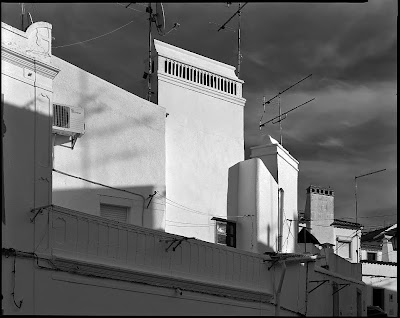
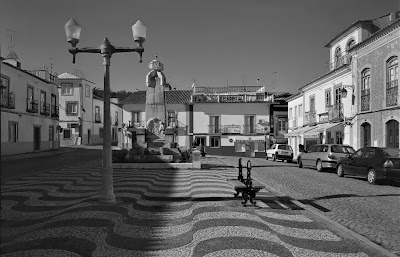
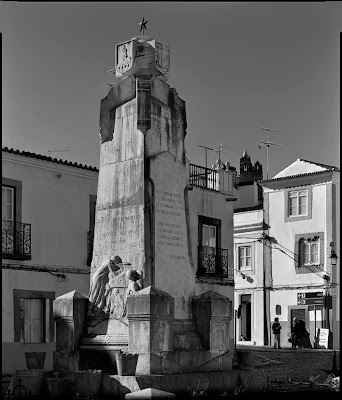

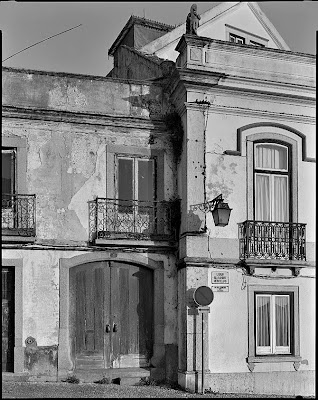

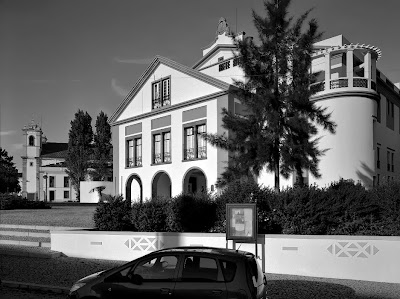
























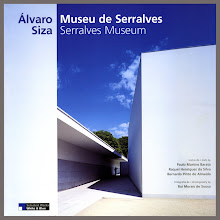+copy.jpg)
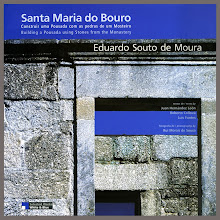+copy.jpg)
+copy.jpg)
+copy.jpg)
+copy.jpg)
+copy.jpg)